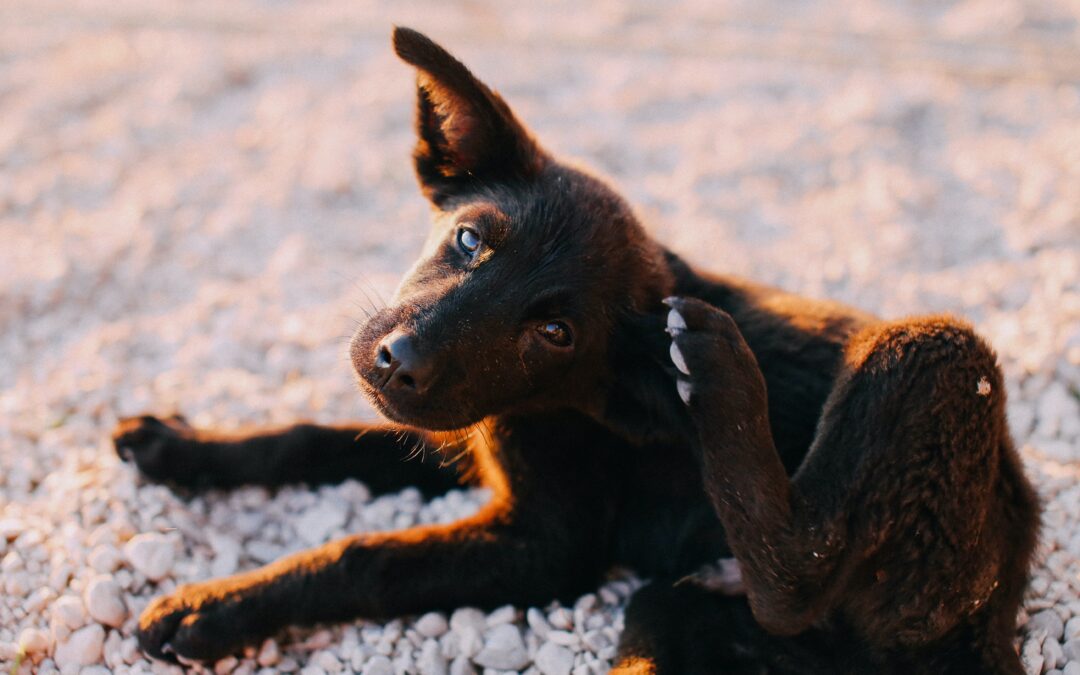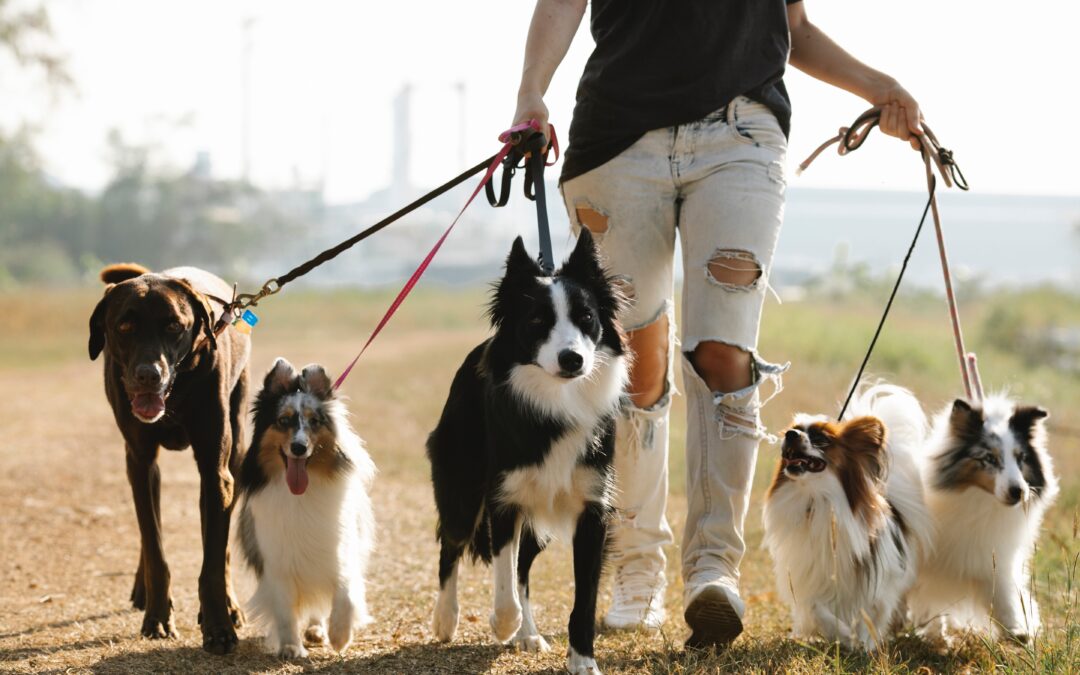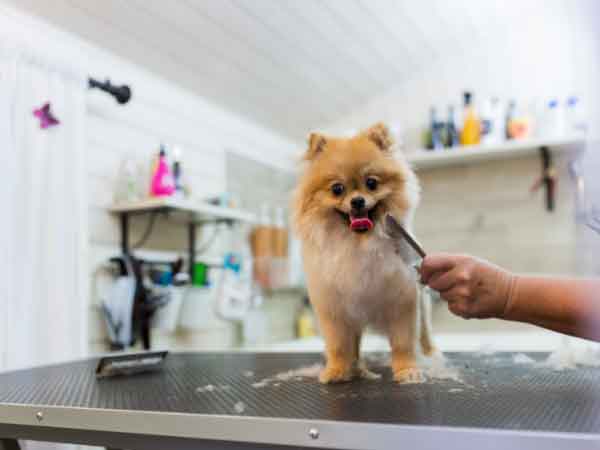How often should I get my dog groomed?
The most common thing new owners ask me is how often they should groom their dogs. The answer depends on several different factors, including its breed, coat type, age, and other variables. For example, a long-haired dog would require more frequent grooming than a short-haired dog. But regardless of that, you have a dog grooming schedule in place to make sure you maintain your dog’s overall health and wellness. Your dog grooming scheduling should be made keeping in mind your dog’s breed and its current health.
To help you keep your dog’s coat looking and feeling good, we talked with our professional groomers about how often different types of dogs need to be groomed. In this article, we’ll cover grooming needs for several different types of hair and coats. Keeping in mind that all dogs, regardless of breed, should have their nails trimmed at least once a month, here are some general guidelines for how often to groom a dog based on coat type.
Short-haired dogs
Short-haired dogs only need occasional baths and minimal brushing. If they shed excessively, ask your groomer if they offer any low-shed services. It may be called carding, FURminating, or something else entirely, but most groomers will offer a thorough brushing that should reduce your dog’s shedding. Keep in mind that nothing will stop shedding entirely, not even shaving your dog.
While short-haired dogs will not get mats, it is still a good idea to brush them regularly at home. Brushing with a stiff-bristled brush stimulates natural oil production for a shiny, healthy coat. It also removed dead hair and skin cells and allows you to check your dog’s skin for changes or growths.
As for how often you should bathe an otherwise healthy short-haired dog, a good rule of thumb is no more than once a month or whenever they start to stink! Overbathing can dry out the skin and lead to brittle hair and shedding. Frequent brushing is much more important for healthy skin. When you do decide to bathe your dog at home, skip the human shampoo – it is far too stripping – and opt for a soap-free product with natural ingredients like oatmeal, aloe vera, and herbal proteins.
Short hair & double coats
Double-coated breeds have a soft undercoat and a longer top layer of coarse guard hairs. The long outer coat protects the dog from the sun and helps repel dirt, parasites, and moisture. The soft inner coat provides warmth in the winter and is drastically shed seasonally to keep the dog cool in the summer. These major shedding episodes are known as “coat blow” and typically occur once or twice a year depending on the climate.
Plan on grooming your double-coated dog at least four times a year to help pull out the dead undercoat. Invest in a wire brush or pin brush for your dog’s outer coat and a grooming rake or FURminator for the dense undercoat.
You may be tempted to shave your double-coated dog to prevent shedding or help keep them cool in the summer. Believe it or not, shaving actually puts these dogs at a higher risk for heatstroke! What remains of the undercoat after a seasonal coat blow helps to hold cool air close to the skin and the double layers protect against sunburn. Nature knows best so put down those clippers!
Dogs with long hair & double coats
The majority of double-coated dogs can also be classified as long-haired breeds. Like their short-coated cousins, they tend to shed seasonally and require the same brushing and maintenance as above.
However, these dogs also have long “feathers” of hair on their feet, legs, bellies, butts, and ears that require occasional trimming. This longer hair is prone to matting, especially around the butt and behind the ears.
If your dog develops mats, take them to a groomer to have them cut out. Don’t try to cut mats out yourself, as they are often very close to the skin and you may accidentally injure your dog. As above, resist the urge to shave your dog’s long, puffy coat!
Silky coated dogs
Silky-coated dog breeds have a single coat of fine, smooth hair that grows continuously and must be trimmed periodically to maintain good hygiene and prevent matting. These dogs must be groomed professionally.
Most people opt for short “puppy” cuts which can last two to three months. Those who opt to keep their dogs’ hair long and show ring ready can expect to have them groomed at least every four to six weeks.
Silky dogs also need to be brushed regularly between grooms, especially those with longer hair. Since their coats are so fine they are more prone to matting. Bathing should be left to the pros at the time of grooming or on an as-needed basis only. Overbathing can dry out delicate skin and make silky hair brittle.
Dogs with wiry coats
Dogs with wiry coats are rough and coarse to the touch. They have thick, bristly hair which helped protect them from thorns and branches in their early days as hunting companions. These breeds are less prone to matting and can often go two to three months between grooming appointments. But just because they are low maintenance does not mean they are no maintenance! Wiry dogs still need occasional bathing and brushing with a slicker brush to maintain a healthy coat and avoid mats.
Since wiry dogs have naturally brittle hair it is very important not to over-bathe them. Ask your vet or groomer for a shampoo recommendation that is gentle and soap-free so as not to dry out the coat.
While clipping is not recommended, wiry dogs have a unique grooming requirement. Since they do not shed, their thick coats must be periodically hand-stripped. This process involves pulling out old dead hairs with a grooming knife and a grooming stone. Since this is a very skilled process, it must be left up to a professional groomer.
Dogs with curly and wavy coats
These breeds are the most likely to mat. Any hair longer than half an inch should be brushed at least twice a week, and hair longer than an inch should be brushed daily. Most groomers recommend keeping curly and wavy hair at a maximum length of two inches.
These dogs require professional grooming every four to six weeks to prevent severe matting. Very curly dogs like Poodles should be brushed at least three times a week, if not daily. As with other long-haired breeds, do not attempt to remove mats yourself.
More Village Barker

How to Prevent Fleas
Flea prevention is an essential part of maintaining the health and well-being of dogs. Fleas are external parasites that can cause various problems, such as itching, skin irritation, and even...

Twelve Amazing Facts about Dogs
Dogs communicate through body language: Dogs use various body language cues to communicate their feelings and intentions. Tail wagging, ear position, facial expressions, and body posture are...

